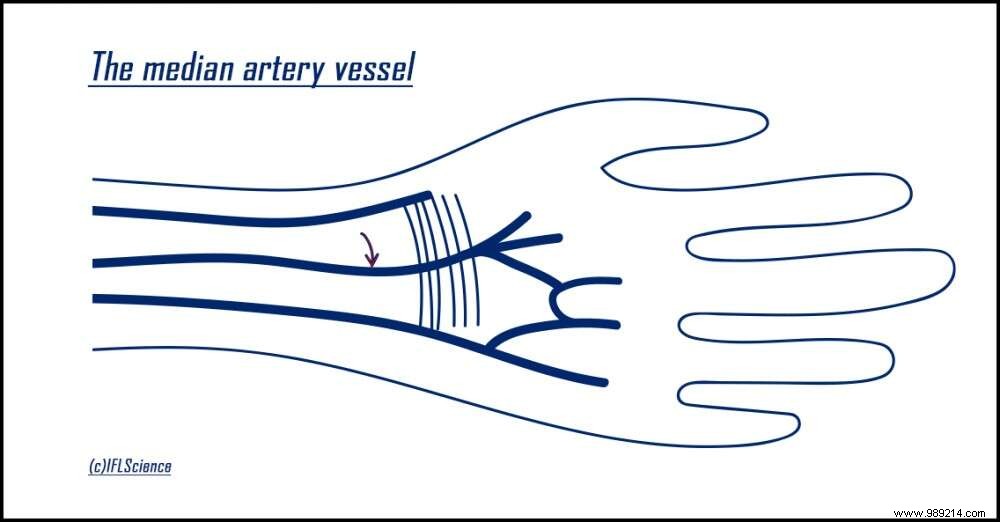A new study proves once again that our species, Homo Sapiens, is not yet done with evolution. According to researchers from the University of Adelaide (Australia), the prevalence of a blood vessel, the median artery, has indeed increased considerably since the end of the 19th century.
At the embryonic stage of our development, the median artery is the main vessel that carries blood to the forearm and hand. It then disappears (around eight weeks) in favor of the radial and ulnar arteries while we continue to develop in the uterus. In the past, some people still sometimes presented this famous median artery in adulthood, but this anatomical characteristic remained generally very rare.
What Australian researchers are telling us today is that more and more people maintain this artery in the forearm. More precisely, nowadays, one in three people are affected . The study, published in the Journal of Anatomy , also suggests that the trend should continue to continue for at least the next eighty years . Eventually, when more than 50% of the people in the world exhibit this "anomaly", it will finally become the new norm of evolution.
"Since the 18th century, anatomists have studied the prevalence of this artery in adults and our study shows that it is clearly increasing “, confirms Dr. Teghan Lucas, the main author of this work. The prevalence was about 10% in people born in the mid-1880s, compared to 30% in those born in the late 20th century, so this is a significant increase over a fairly short period in matter of evolution “.
This increase may "result from mutations in genes involved in median artery development or "health problems in mothers during pregnancy “, says the researcher. Still, if the trend continues, “a majority of people will have the median artery of the forearm by 2100″ .

In accordance with Darwin's theory of natural selection, evolutionary advantages leading to the maintenance of this artery are not yet very clear. We could imagine that a persistent median artery could enable more powerful forearms or more dexterous fingers thanks to its extra blood supply. Of course, these are just guesses. Determining the factors contributing to this process of natural selection will require much more research.
Still, this arterial feature joins a handful of other examples demonstrating how human anatomy continues to evolve over time. We think in particular of the growing absence of wisdom teeth or the growing presence of a small bone at the back of the knee joint called the fabella.